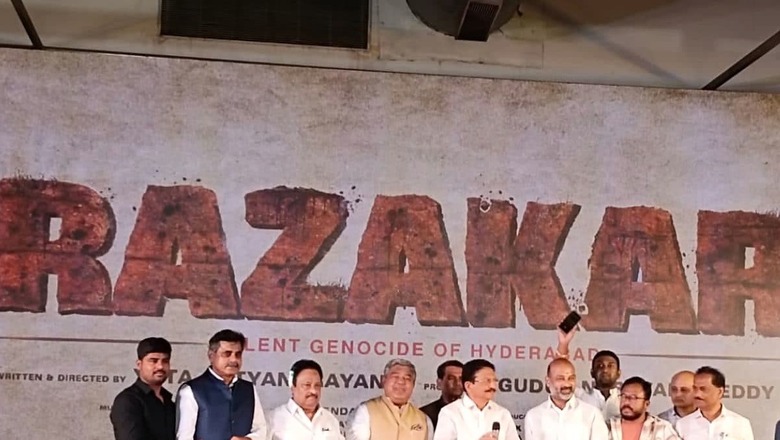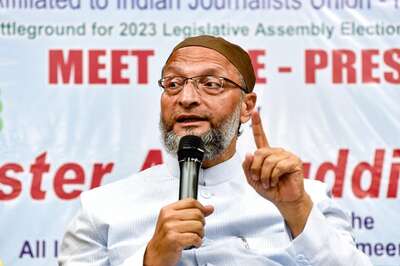
views
Will the movie Razakar – The Silent Genocide of Hyderabad stir up emotions like The Kashmir Files did? The poster of the movie was recently released in the presence of BJP leaders in Hyderabad. The graphic poster of the film shows a Brahmin impaled on a bayonet and surrounded by bodies. Director Yata Satyanarayana, however, said at the launch that the movie had not been made to sow seeds of discontent among people.
The Razakars are an emotive chapter in the history of Hyderabad; they were a paramilitary force of the Majlis-e-Ittehadul Muslimeen (MIM), who primarily committed atrocities against Hindus. The outfit became extremist under the leadership of Qasim Razvi, a lawyer from Maharashtra’s Latur. He became close to the Nizam, Mir Osman Ali Khan, and dreamt of establishing a Muslim theocracy. He coined the slogan ‘Anal Malik’, which means every Muslim in the state is a ruler.
But it has to be noted that the Razakars were also used by Hindu landlords to quell armed rebellion by communists. A few well-known Muslim activists, too, were killed by the Razakars.
Brutal rape captured in folklore
“The Razakars plundered Hindu villages and raped many women. It is difficult to estimate the number because no formal reports were released about the atrocities,” said RSS ideologue and senior journalist Raka Sudhakar Rao, who narrated the story of Nakka Andalamma. She was disrobed, raped and then made to perform Bathukamma rituals and later killed herself by jumping into a well.
Her story was narrated by folk singers and other groups till the late 1980s. “There are many stories about men being made to stand in a line and being shot. In Maharashtra alone, they razed 400 Hindu villages, while 300 houses were burnt in a village in Karnataka. The Nizam government provided them all kinds of support,” Rao said.
“In the initial stages, the Razakars were involved in conversion activities only. They were not armed. After Razvi became the chief of the MIM, they were armed and started targeting Hindus. They were also employed by Hindu landlords to fight communists,” he added.
Razakars came amid deep communal divide
“Islamic communalism started in Hyderabad in the mid 1930s,” said N Venugopal, editor of ‘Veekshanam’ magazine. Tablighis would go from village to village to persuade people to embrace Islam.
“Some of the early converts were Dalits from the Madiga community. Almost simultaneously, members of the Arya Samaj launched ‘shuddhikaran’ ceremonies to reconvert them. After 1937, there was a deep communal divide in the Hyderabad state due to these activities – something that had not been witnessed before despite Hyderabad being ruled by Muslim rulers for 400 years. Till then, all riots had been between Sunnis and Shias. Hyderabad witnessed its first communal riot in 1938. It was against this background that Razvi rose to power,” said the editor.
Razvi wanted theocracy
“The Nizam never considered Hyderabad to be a Muslim state as 80 percent of the population were Hindus. However, Razvi wanted it to be a theocracy. He coined the slogan ‘Anal Malik’,” Venugopal said.
Razakars were supposed to empower Muslims, but their foot soldiers were Dalits and Dalit converts. In 1944, the Telangana armed struggle began and the feudal landlords used them as a vigilante force against communists.
With such a chequered history, it remains to be seen how the movie portrays Razakars, who were disbanded after Hyderabad was merged with India in 1948. With the assembly elections a few months away, the movie, which is being produced by a BJP leader, might be used to influence voters.















Comments
0 comment